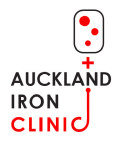Iron is the most common and widespread nutritional deficiency, even in industrialised countries, and affects approximately two billion people worldwide.
What is Iron Deficiency?
Your blood has red cells and these red cells carry haemoglobin. Within the haemoglobin is iron. Iron is the essential nutrient that your body needs to maintain its energy levels and that helps you with both physical and mental health.
Symptoms of iron deficiency
Most people suffer the symptoms of iron deficiency and don’t know they have it and how easy it is to fix it.
If you do not identify that you have iron deficiency, long term consequences may develop that affect your health and wellbeing.
Initially, iron deficiency can be so mild that it goes unnoticed. But as the body becomes more deficient in iron, the signs and symptoms that were initially tolerable, may intensify, and anaemia can develop
- Anaemia
- Extreme fatigue
- Tiredness
- Weakness
- Pale skin
- Chest pain, fast heartbeat or shortness of breath
- Headache, dizziness or lightheadedness
- Cold hands and feet
- Inflammation or soreness of your tongue
- Brittle nails
- Picca – unusual cravings for non-nutritive substances, such as ice
- Poor appetite, especially in infants and children with iron deficiency anaemia
- Poor exercise performance
- Impaired neurocognitive development in children
- Impaired concentration
What is Iron and what is it used for in the body?
Iron, element 26 in the periodic table, is the fourth most abundant element of the earth’s crust and, after aluminium, the second most abundant metal, is also the essential nutrient that is most commonly deficient in human diets.
Iron is crucial to our body’s biologic functions, including respiration, energy production, DNA synthesis, and cell proliferation. The human body has evolved to conserve iron in several ways, including the recycling of iron after the breakdown of red cells and the retention of iron in the absence of an excretion mechanism. Irons absorption is limited to 1 to 2 mg daily as it has toxic effects if accumulated, and most of the iron needed daily (about 25 mg per day) is provided through recycling by macrophages that phagocytose senescent erythrocytes. The latter two mechanisms are controlled by the hormone hepcidin, which maintains total-body iron within normal ranges, avoiding both iron deficiency and excess.
Iron plays a key role in oxygen uptake, transport, and storage, as well as oxidative metabolism in the skeletal muscle; it also is involved in erythropoiesis.
What is Anaemia?
Anaemia is the decrease in healthy red blood cells and is measured on a blood test as a drop in haemoglobin (Hb)
There are many different ways to describe anaemia.
Anaemia can also be classified on how the red blood cells look under the microscope – if the red cell is small, it is microcytic anaemia, if they are larger, macrocytic anaemia and normal size red cell is termed normocytic anaemia. If they are normal size it is normocytic anaemia.
Similarly, anaemia maybe termed by the underlying cause of the anaemia such as iron deficiency anaemia when the patient is iron deficient, or chronic anaemia in the case when the patient has chronic illnesses such as heart or kidney failure, autoimmune diseases – rheumatoid arthritis, SLE, cancer and inflammatory bowel disease. Of course there is a lot of cross over between the anaemias – some chronic anaemias have an underlying iron deficiency, so it is important to find the cause of any anaemia.
What is iron deficiency anaemia?
Iron deficiency anaemia is a result of low iron (ferritin) levels and reduced haemoglobin in the body. Iron deficiency without anaemia is three times more common that iron deficiency anaemia and is referred to as latent iron deficiency
Mild iron deficiency usually doesn’t cause complications. However, left untreated, iron deficiency can become severe and result in low haemoglobin (anaemia) and lead to health problems, including the following:
Heart problems. Iron deficiency may lead to a rapid or irregular heartbeat. Your heart must pump more blood to compensate for the lack of oxygen carried in your blood when you’re anaemic. This can lead to an enlarged heart or heart failure.
Problems during pregnancy. In pregnant women, severe iron deficiency anaemia has been linked to premature births and low birth weight babies. But the condition is preventable in pregnant women who receive iron supplements as part of their prenatal care.
Growth problems. In infants and children, severe iron deficiency can lead to anaemia as well as delayed growth and development. Additionally, iron deficiency anaemia is associated with an increased susceptibility to infections.
Disorders associated with iron deficiency (anaemia).
Stage of life / lifestyle
- Infancy
- Adolescence in girls
- Pregnancy
- Regular blood donations
- Being an elite athlete
Blood loss
- Digestive tract: colonic carcinoma, gastric carcinoma, inflammatory bowel
- Diseases, ulcers, angiodysplasia, parasites
- Gynaecological loss
- Surgery
- Haematuria, epistaxis, haemoptysis
- Haemodialysis
- Non-steroidal anti-inflammatory drugs, aspirin
Malabsorption
- Coeliac disease
- Gastrectomy
- Helicobacter pylori
- Gut resection, atrophic gastritis, bypass gastric surgery, bacterial overgrowth
- Interaction with food elements: tea, coffee, calcium, flavonoids, oxalates, phytates (a naturally occurring compound found in all plant foods like beans, grains, nuts, and seeds). There are concerns that foods high in phytates might reduce the absorption of minerals
- Pica syndrome, pagophagia
- Proton-pump inhibitors and H2 antagonists (Omeprazole/ Pantoprazole/ Raniditine)
Iron deficiency and/or iron deficiency anaemia associated with chronic disease
- Chronic heart failure
- Cancer
- Chronic kidney disease
- Rheumatoid arthritis
- Obesity
- Inflammatory bowel diseases
